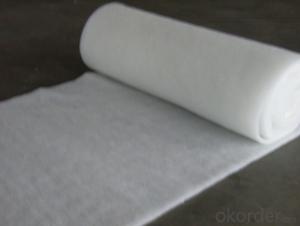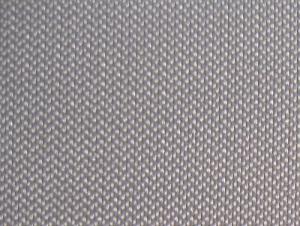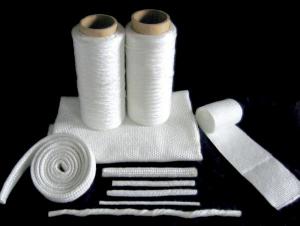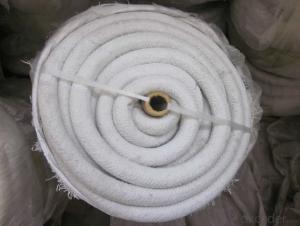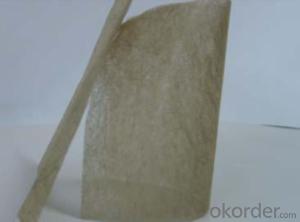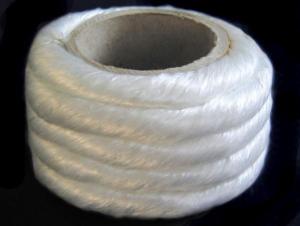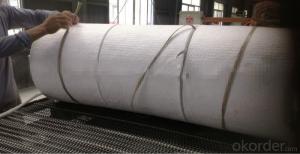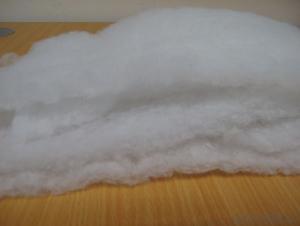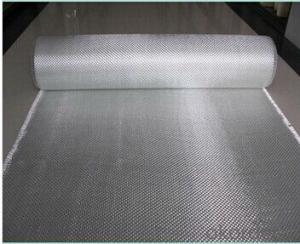Refractory Heat Resistant Fiber Fabric
- Loading Port:
- Shanghai
- Payment Terms:
- TT OR LC
- Min Order Qty:
- 1 m.t.
- Supply Capability:
- 111 m.t./month
OKorder Service Pledge
OKorder Financial Service
You Might Also Like
Specifications
1.Refractory heat resistant fiber fabric
2.Heat insulation
3.white
4.High strength
5.MSDS, ISO9001-2008
Refractory Heat Resistant Fiber Fabric
It is a woven fabric made of our high quality ceramic fiber yarns. It can be used for high temperature applications up to1000° C. The cloth is reinforced with fiberglass filament, and optional stainless steel wire. It contains a certain amount of binder material which is normally burned at lower temperature and does not affect the insulation property.
Features of heat resistant fibe fabric
1.Good handling strength
2.Low thermal conductivity and heat storage
3.Excellent thermal shock resistance
4.Easy machining
5.Low weight,eastic, flexible
6.Excellent hydrophobic property
7.Smooth surface and anti-tearing
- Q:Can glass fiber textile be used in thermal insulation?
- Yes, glass fiber textile can be used in thermal insulation. Glass fiber textiles, also known as fiberglass textiles, are made from fine fibers of glass that are woven into a fabric. These textiles have excellent thermal insulation properties due to the low thermal conductivity of glass. They can effectively trap and slow down the transfer of heat, making them suitable for use in thermal insulation applications. Glass fiber textiles are commonly used in buildings and houses as insulation materials. They can be installed in walls, roofs, and floors to reduce heat loss or gain, thereby improving energy efficiency. The fabric can be easily cut and shaped to fit different areas, making it a versatile option for insulation. In addition to thermal insulation, glass fiber textiles also offer other benefits. They are non-combustible, resistant to moisture, and do not promote the growth of mold or mildew. These properties make them safe and durable for long-term use. However, it is important to note that glass fiber textiles can be irritating to the skin, eyes, and respiratory system. Proper precautions, such as wearing protective clothing and masks, should be taken when handling and installing these textiles. Additionally, it is recommended to consult with professionals or follow manufacturer guidelines for proper installation and maintenance of glass fiber textile insulation.
- Q:What kinds of fiberglass mesh do you have?
- Glass fiber mesh cloth, also called fiberglass mesh, mesh cloth, heat insulation, it can be divided into standard type glass fiber cloth, glass fiber cloth reinforced, flame retardant glass fiber mesh and self-adhesive fiberglass mesh cloth four.
- Q:What are the different weight options for glass fiber textile?
- The weight options for glass fiber textile can vary depending on the specific application and requirements. Generally, glass fiber textiles are available in a range of weights, typically measured in ounces per square yard (oz/yd²) or grams per square meter (g/m²). Common weight options include 1 oz/yd² (34 g/m²), 2 oz/yd² (68 g/m²), 4 oz/yd² (136 g/m²), 6 oz/yd² (204 g/m²), 8 oz/yd² (272 g/m²), and higher. The choice of weight depends on factors like the desired strength, flexibility, and thickness of the final product.
- Q:Can glass fiber textiles be used in automotive applications?
- Glass fiber textiles, also known as fiberglass, possess qualities that render them suitable for application in the automotive industry. Firstly, they are lightweight yet remarkably durable, making them ideal for use in automotive applications that necessitate weight reduction, such as the construction of car bodies or interior components. By incorporating glass fiber textiles, the overall weight of the vehicle can be reduced, resulting in enhanced fuel efficiency and performance. Secondly, glass fiber textiles exhibit exceptional thermal and electrical insulation properties, rendering them appropriate for use in automotive applications requiring insulation, such as the production of engine covers, exhaust systems, or heat shields. Glass fiber textiles can effectively withstand high temperatures and provide protection against heat transfer. Furthermore, glass fiber textiles demonstrate resistance to corrosion, chemicals, and UV radiation, thus making them highly durable and suitable for use in automotive applications exposed to harsh conditions, such as the manufacturing of exterior components or underbody shields. Glass fiber textiles can endure the elements and maintain their structural integrity over time. Moreover, glass fiber textiles can be molded into intricate shapes and designs, thereby allowing for greater flexibility in automotive design. They can be effortlessly shaped into various components, including spoilers, fenders, or interior trims, granting designers increased creative freedom and options. In conclusion, due to their lightweight, durable, insulating, and corrosion-resistant properties, glass fiber textiles can be effectively utilized in automotive applications. Their versatility and ability to be molded into complex shapes make them an optimal choice for various automotive components, consequently contributing to the improvement of vehicle performance, fuel efficiency, and overall durability.
- Q:What is the cost of glass fiber textiles?
- The cost of glass fiber textiles varies depending on factors such as the quality, quantity, and specific application. Generally, glass fiber textiles can range in price from a few dollars per square yard to several tens of dollars per square yard.
- Q:What are the different finishes available for glass fiber textiles?
- There are several different finishes available for glass fiber textiles, including sizing, coating, and laminating. These finishes can enhance the strength, durability, and performance of the textiles, and can also provide specific properties such as fire resistance, waterproofing, or UV protection.
- Q:Can glass fiber textiles be used in curtains or drapes?
- Curtains or drapes can indeed utilize glass fiber textiles. These textiles, also known as fiberglass fabrics, possess a lightweight nature and possess high tensile strength. They find common usage in a range of applications, including insulation, reinforcement, and filtration. When it comes to curtains or drapes, glass fiber textiles bring forth several advantages. To begin with, they possess fire-resistant properties, rendering them a secure option for window coverings. Glass fiber textiles have a high melting point and are not easily ignited, thereby minimizing the risk of accidents and promoting safety in residential or commercial spaces. Additionally, glass fiber textiles offer exceptional insulation capabilities. By reducing heat transfer through windows, they assist in maintaining a comfortable indoor temperature. This not only enhances comfort but also leads to energy savings by reducing the reliance on heating or cooling systems. Moreover, glass fiber textiles provide privacy and light control. They can be manufactured in various levels of opacity, enabling different degrees of light transmission. They can be employed to create sheer curtains, allowing for privacy while still permitting natural light to enter the room. Alternatively, they can be utilized in the creation of blackout curtains, effectively blocking out all light. Lastly, glass fiber textiles possess durability and longevity. They are resistant to wear and tear, making them suitable for curtains or drapes that are frequently opened and closed. Additionally, they exhibit resistance to mold and mildew, proving advantageous in humid environments. All in all, glass fiber textiles present a versatile and practical option for curtains or drapes. By combining safety, insulation, light control, and durability, they prove to be a suitable choice for both residential and commercial applications.
- Q:Can glass fiber textiles be used for automotive interiors?
- Yes, glass fiber textiles can be used for automotive interiors. Glass fiber textiles are known for their high strength and durability, making them suitable for various applications, including automotive interiors. These textiles can be used to create upholstery fabrics, headliners, door panels, and other interior components in vehicles. Glass fiber textiles offer excellent resistance to wear and tear, as well as resistance to heat and chemicals. Additionally, they can be easily molded into different shapes and forms, allowing for customization and design flexibility in automotive interiors. Overall, glass fiber textiles provide a viable option for enhancing the quality and functionality of automotive interiors.
- Q:Can glass fiber textiles be used in the aerospace industry?
- Yes, glass fiber textiles can be used in the aerospace industry. Glass fiber textiles, also known as fiberglass textiles, are lightweight, strong, and have high tensile strength, making them ideal for various aerospace applications. They are commonly used in the construction of aircraft parts, such as fuselages, wings, and empennages. One of the main advantages of glass fiber textiles is their excellent resistance to corrosion, which is crucial in the aerospace industry due to the harsh environmental conditions that aircraft are exposed to. Additionally, glass fiber textiles have excellent thermal insulation properties, which can help maintain the desired temperature inside the aircraft. Furthermore, glass fiber textiles can be molded into complex shapes, allowing for the production of customized components with high precision. This flexibility makes them suitable for various aircraft designs and enables the optimization of weight and performance. Moreover, glass fiber textiles have a relatively low cost compared to other materials used in the aerospace industry, such as carbon fiber composites. This cost-effectiveness makes them an attractive option for manufacturers, especially for non-critical components that do not require the highest strength-to-weight ratio. However, it is important to note that glass fiber textiles may not be suitable for all aerospace applications. In cases where extreme strength and stiffness are required, materials such as carbon fiber composites may be preferred. Nonetheless, glass fiber textiles offer a reliable and cost-effective solution for many aerospace applications, making them a widely used material in the industry.
- Q:How do glass fiber textiles compare to ceramic fiber textiles?
- Glass fiber textiles and ceramic fiber textiles are both popular materials used in various applications. However, there are some key differences between the two that should be considered when choosing the appropriate material for a specific project. Strength and Durability: Glass fiber textiles are generally stronger and more durable than ceramic fiber textiles. Glass fibers have a higher tensile strength, meaning they can withstand more stress before breaking. This makes them ideal for applications that require high strength and durability, such as reinforcement in composite materials. Ceramic fibers, on the other hand, are more brittle and can break easily under stress. Thermal Properties: Ceramic fiber textiles have superior thermal properties compared to glass fiber textiles. They have a higher melting point and can withstand much higher temperatures without deforming or degrading. This makes ceramic fibers suitable for applications where high-temperature resistance is crucial, such as insulation in furnaces or kilns. Glass fibers, although they can handle relatively high temperatures, may not be suitable for extremely high-temperature environments. Chemical Resistance: Glass fiber textiles have excellent chemical resistance, making them suitable for applications where exposure to harsh chemicals or corrosive environments is expected. They are resistant to most acids, alkalis, and solvents. Ceramic fibers, on the other hand, are generally not as chemically resistant as glass fibers and may be prone to degradation when exposed to certain chemicals. Insulation Properties: Both glass fiber textiles and ceramic fiber textiles offer good insulation properties. However, ceramic fibers have lower thermal conductivity, meaning they provide better insulation. This makes them suitable for applications that require excellent thermal insulation, such as in the construction of fire-resistant barriers or in high-temperature insulation systems. Cost: In terms of cost, glass fiber textiles are generally more affordable compared to ceramic fiber textiles. This cost advantage makes them a popular choice for a wide range of applications. Ceramic fibers, on the other hand, tend to be more expensive due to their superior thermal properties and higher manufacturing costs. In summary, glass fiber textiles and ceramic fiber textiles have their own unique properties and advantages. Glass fibers are stronger, chemically resistant, and more cost-effective, while ceramic fibers offer superior thermal properties and insulation. The choice between the two depends on the specific requirements of the application, such as strength, temperature resistance, chemical exposure, and budget constraints.
1. Manufacturer Overview |
|
|---|---|
| Location | |
| Year Established | |
| Annual Output Value | |
| Main Markets | |
| Company Certifications | |
2. Manufacturer Certificates |
|
|---|---|
| a) Certification Name | |
| Range | |
| Reference | |
| Validity Period | |
3. Manufacturer Capability |
|
|---|---|
| a)Trade Capacity | |
| Nearest Port | |
| Export Percentage | |
| No.of Employees in Trade Department | |
| Language Spoken: | |
| b)Factory Information | |
| Factory Size: | |
| No. of Production Lines | |
| Contract Manufacturing | |
| Product Price Range | |
Send your message to us
Refractory Heat Resistant Fiber Fabric
- Loading Port:
- Shanghai
- Payment Terms:
- TT OR LC
- Min Order Qty:
- 1 m.t.
- Supply Capability:
- 111 m.t./month
OKorder Service Pledge
OKorder Financial Service
Similar products
New products
Hot products
Related keywords
